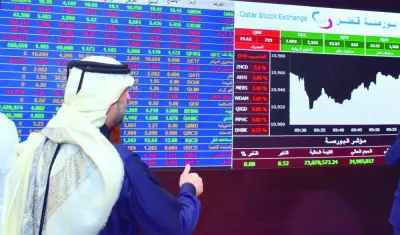Qatar’s 2020 GDP projection has been raised by 1.5 percentage points by Oxford Economics as low incidence of Covid-19 supported confidence and domestic activity in Qatar.
According to Oxford Economics, Qatar’s economic recovery shows further improvement along with Kuwait in the GCC region.
Relative to the rest of the GCC, Qatar is performing well, in terms of mobility.
Oxford Economics noted the outlook for Emerging Market (EM) countries continues to vary with the prevalence of Covid-19 but, in contrast to much of Europe and the US, at this stage EMs do not appear to be heading into a significant second wave of the pandemic that would hamper their recovery.
And while growth and business sentiment numbers have weakened, it has kept its 2020 and 2021 EM GDP growth forecasts little changed, at -2.3% and +6.2% respectively.
China’s GDP grew less than the researcher expected in Q3, leading to a small downward revision to the 2020 growth forecast to 2%, but the recovery in its domestic demand cycle should continue, boding well for EMs.
As for India, Oxford Economics said it is increasingly confident about a strong rebound in Q3 and have raised its Q4 growth forecast given the robust bottom-up data.
In particular, India’s manufacturing indicators have surprised on the upside. In part this is due to seasonal festive demand, Oxford Economics noted.
Other Asian economies are also healing, but the sharp rebound in activity seen in Q3 is unlikely to be sustained, particularly as government stimulus measures are scaled back.
In Latin America, slower-than-expected easing of restrictions and the closer-than-expected US election result will cloud the outlook.
Meanwhile, demand for exports may come under pressure as much of Europe re-enters lockdown, in turn extending the downturn in tourism for certain countries.
According to Oxford Economics EM easing cycles are on hold following a rise in inflation and greater FX volatility.
However, with a few exceptions, higher headline inflation has been largely driven by higher food prices.
Benign core price pressures mean that few EM central banks will be hiking rates in the foreseeable future. And fiscal retrenchment will be relatively slow, in order not to reinforce demand weakness, although this will slow any improvement in debt metrics, it said.
Relative to the rest of the GCC, Qatar is performing well, in terms of mobility.
Oxford Economics noted the outlook for Emerging Market (EM) countries continues to vary with the prevalence of Covid-19 but, in contrast to much of Europe and the US, at this stage EMs do not appear to be heading into a significant second wave of the pandemic that would hamper their recovery.
And while growth and business sentiment numbers have weakened, it has kept its 2020 and 2021 EM GDP growth forecasts little changed, at -2.3% and +6.2% respectively.
China’s GDP grew less than the researcher expected in Q3, leading to a small downward revision to the 2020 growth forecast to 2%, but the recovery in its domestic demand cycle should continue, boding well for EMs.
As for India, Oxford Economics said it is increasingly confident about a strong rebound in Q3 and have raised its Q4 growth forecast given the robust bottom-up data.
In particular, India’s manufacturing indicators have surprised on the upside. In part this is due to seasonal festive demand, Oxford Economics noted.
Other Asian economies are also healing, but the sharp rebound in activity seen in Q3 is unlikely to be sustained, particularly as government stimulus measures are scaled back.
In Latin America, slower-than-expected easing of restrictions and the closer-than-expected US election result will cloud the outlook.
Meanwhile, demand for exports may come under pressure as much of Europe re-enters lockdown, in turn extending the downturn in tourism for certain countries.
According to Oxford Economics EM easing cycles are on hold following a rise in inflation and greater FX volatility.
However, with a few exceptions, higher headline inflation has been largely driven by higher food prices.
Benign core price pressures mean that few EM central banks will be hiking rates in the foreseeable future. And fiscal retrenchment will be relatively slow, in order not to reinforce demand weakness, although this will slow any improvement in debt metrics, it said.




